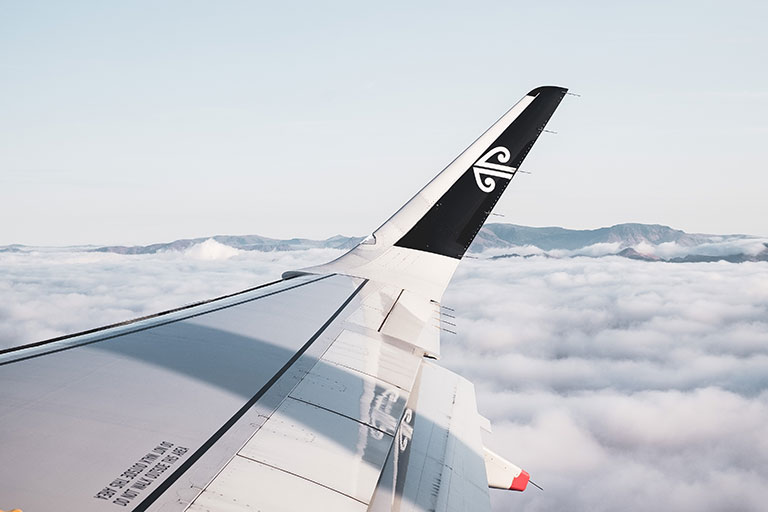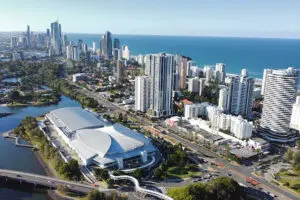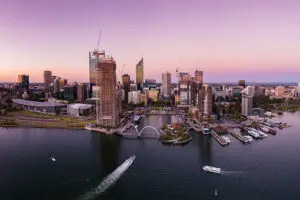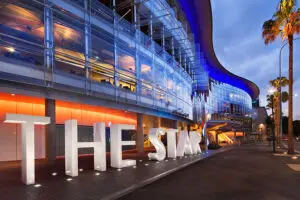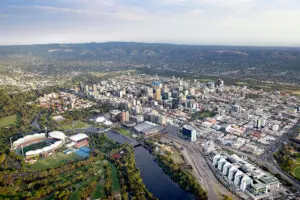This represents more than a fifth of the SAF currently being produced worldwide.
The study from Air New Zealand and LanzaJet was funded by the airline and the New Zealand Government and undertaken in collaboration with Scion, Z Energy and WoodBeca.
The study determined that the fuel could be produced from wood waste and low-value wood products from New Zealand.
Sustainable aviation fuel is seen as a key avenue for decarbonising the commercial aviation industry, with emissions savings of up to 80 per cent when compared to conventional jet fuel.
And with up to 80 per cent of an event’s emissions coming from aviation, SAF will also play a key role in helping the business events industry reach net zero by 2050.
Currently no SAF is produced locally in either Australia or New Zealand – although there are plans in the works for several refineries in Australia.
To date, New Zealand has been importing some sustainable aviation fuel, although there is also a global shortage of the fuel compared to the demand for it.
The New Zealand study shows promise for locally produced SAF, but there is much work to be done to establish a local industry capable of turning the potential into reality.
“The good news is that turning woody biomass into SAF is technically possible in New Zealand, and with the right settings, is an industry that can get started fairly quickly,” said LanzaJet CEO, Jimmy Samartzis.
“Building a new industry requires developing a broad ecosystem for SAF in New Zealand, anchored in technology and supported by policy, capital and demand to help attract funding and make it at a price airlines can afford. We are seeing many countries move quickly to put mechanisms in place to stimulate, produce and export their own SAF in the future, because aviation is critical to global economies, as it is here in New Zealand.
“We look forward to completing additional analysis into what other feedstocks, such as municipal household and commercial waste, could be used to make domestic SAF production an even more attractive option in Aotearoa.”
The need for supportive regulation was echoed by Air New Zealand’s chief sustainability and corporate affairs officer, Kiri Hannifin.
“The right settings and regulatory environment will be important as New Zealand considers homegrown SAF because it’s the only way to secure the necessary global investment,” said Hannifin.
“There is already significant international momentum and in our view New Zealand shouldn’t get left too far behind or we risk seeing the flow of capital go elsewhere or our valuable raw materials being swooped up by other markets for their own SAF.
“SAF is already being used in small quantities by many airlines globally today, but it currently represents only a fraction of overall aviation fuel and comes at a high premium so anything that can be done increase supply and to reduce that premium is vital.
“These initial findings support that alternative jet fuel can be produced here in Aotearoa from our own locally-grown woody waste, which is very positive for a country that is heavily reliant on long-haul aviation and trade and currently imports 100 per cent of its jet fuel,” said Hannifin.
“Alternative jet fuel such as SAF is currently the only real tool available to address carbon emissions from long-haul aviation, so it’s crucial for connecting New Zealanders, tourists and exporters with the rest of the world.”
Air New Zealand withdrew its interim 2030 carbon emissions reduction target earlier this year, citing multiple reasons including manufacturing and supply chain issues delaying the airline’s fleet renewal plans, the availability and cost of SAF and the policy environment domestically and globally.




